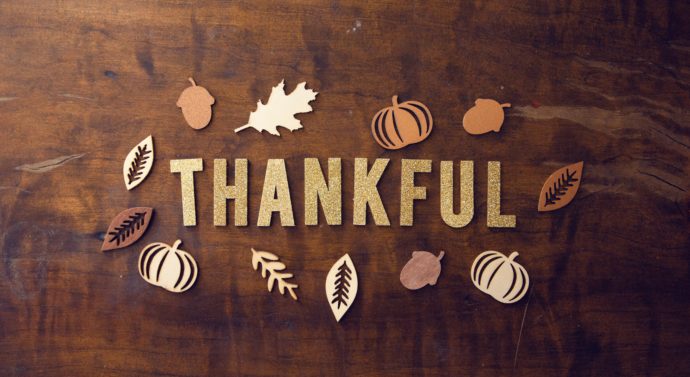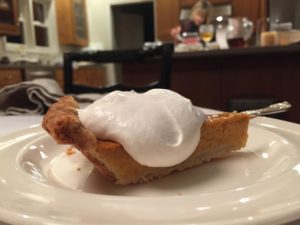
Thanksgiving: Fact or fiction? Or a bit of both?
Community, Front Page, Lifestyle November 16, 2018, Comments Off 149Thanksgiving. It is exactly what it says on the tin – the nationwide celebration of giving thanks. You eat turkey and stuffing and corn and cranberry sauce until you cannot eat anymore. You pat your food baby as you “vegge” out on the couch in front of a football game. Maybe you watch the Macy’s Thanksgiving Day Parade in the morning and/or the National Dog Show which follows it.
Or maybe the day is more about the cooking for you than prime television. Your fondest memories of childhood Thanksgivings were spent in the kitchen with your parents whipping up all the deliciousness to be enjoyed later. Maybe it is going to your grandparents’ house and being surrounded by all your aunts and uncles and cousins (whether you liked it or not).
But outside of your own Turkey Day traditions, what really is Thanksgiving? What makes it one of the most prominent holidays in the U.S.? There has to be more to this holiday than just Pilgrims, right?
It turns out that this celebration is more about our English heritage than it is that snapshot moment of peace between Pilgrims and the Wampanoag tribe.
“The popular image is true for that one moment… somewhat,” stipulated Dr. Michael Verney, a Drury American history professor.
Dr. Verney helped to trace the evolution of Thanksgiving from its conception to its contemporary celebration. While the original Thanksgiving did occur as acknowledgement of the peace between Pilgrims and the Native Americans in 1621, it was not until much later that the holiday became an annual event – and it was for a different reason.
Sarah Hale: A Thanksgiving hero
Sarah Hale is the woman we have to thank for our three days off in November. Hale became the ‘editress’ for “Godey’s Lady’s Book” in 1837 and led the charge for the holiday to be brought back as a celebration of our Puritan roots.
“It wasn’t something that was repeated annually until the early nineteenth century,” Dr. Verney continued. “She’s very concerned about Catholic immigrants coming into the country, and she wants to have a national holiday that celebrates English Protestant traditions. She starts writing about how we should have a national day of thanksgiving every year.”
Hale was the one who convinced President Abraham Lincoln to declare the first national Thanksgiving in 1863. She had lobbied for the holiday for 15 years. Aside from Lincoln himself, she also sent letters to governors in every state, missionaries abroad and naval commanders. In her final letter to Lincoln, she included two responses she had received from these other supporters.
So let’s skip to the food part
Our Thanksgiving plates of turkey, mashed potatoes and green bean casserole are as much a result of Americanization as remembrance of our past. The Pilgrims ate game for their Thanksgiving, such as bluefish and deer, although some wild turkey was probably included.
Hale, however, changed all of that. She emphasized having Thanksgiving in a certain way: this is how you prepare, here is what you should make and here is how you should decorate for it.
“The shift from these more gamey kinds of foods, like fish and ducks, is in large measure to Sarah Hale’s contributions,” stated Dr. Verney. “She is trying to call on the English tradition of harvest festivals. The Native Americans brought deer to the feast. Interestingly enough, the Pilgrims actually had a lot of fish. We don’t really think of fish as being a Thanksgiving kind of food. There certainly wouldn’t have been any pies.”
The most important matter: Pie

Slice of pumpkin pie. Photo via Taylor Stanton.
Dr. Shelley Wolbrink, Drury history professor, stated, “There were no cranberries, pecans or sweet potatoes in medieval Europe—those are distinctly from the Americas—but there were pies.”
Dr. Wolbrink specializes in medieval history and helped to provide the background for today’s American Thanksgiving traditions. Many would be surprised at how many details of this holiday are more similar to our English heritage than American roots.
Hence the pie. These were not pies of the pumpkin variety, but rather meat pies served with a sweet berry sauce. Our desserts of today are a more modern invention.
“There are interesting similarities including the tradition of feasting as a mid-day meal rather than a dinner. Another tradition that might carry over might be the elaborate carving of said creature on the dinner table,” she elaborated. “It’s all about the spectacle, and a great American feast will have that on Thanksgiving.”
Corporations have certainly had their hand in promoting certain foods. The presidential pardoning of the turkey did not begin until the late 19th century and was possibly a ploy by the turkey industry to increase sales. The turkey pardoning did not become an annual event until George H.W. Bush took office in 1989, but it has continued ever since his presidency.
Thanksgiving around the world?
Despite this holiday’s prominence in North America and its English roots, you would be hard pressed to find Thanksgiving celebrated anywhere else. While other countries, such as Germany, Japan and Korea, celebrate their own sort of “thanksgiving,” an American probably would not recognize it if they saw it. Outside of those select few, most countries do not partake in Thanksgiving.
Verna and Velona Tawfik are international Drury students from Egypt. Before coming to the U.S., Velona said, “I used to not think about it [Thanksgiving] at all, never thought about being thankful during that month. Coming to the U.S. and seeing how big it is, it definitely got me to at least be thankful during this time of year.”
Verna agreed with her sister, adding: “I think it’s a great holiday that more countries around the world should do. When you get so caught up in the world it’s hard to be [thankful], so it’s good to have a time to stop and be thankful.”
Naviinesh Gunalan is also an international student at Drury. “When I was back in Malaysia, Thanksgiving was always portrayed as a gathering where families eat roasted turkey together at the dinner table. I thought that was it, and there was nothing special about it,” said Gunalan. “Now I know Thanksgiving as a celebration of love and gratitude, and people really do consider this a special day. I’m surprised to see a lot of my friends traveling a few hundred miles away to be with their family on this special occasion.”
Written by Maclen Johnson and Afton Jagels.